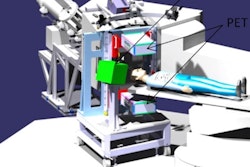Dear Imaging Informatics Insider,
Welcome to the first issue of the Imaging Informatics Insider, which consolidates our former PACS and Healthcare Informatics Communities into a new Imaging Informatics Community for all the news about this burgeoning field. We've made this change to provide our readers with a single source for all our coverage and analysis of news and trends in imaging informatics, and we hope you enjoy the new format.
Our feature article for this inaugural edition focuses on machine learning, one of the hottest and most controversial topics in medical imaging today. Depending on whom you talk to, machine learning will either spell doom for radiologists or be a critical tool to improve their value.
However, it's time now to cut through the artificial intelligence (AI) hyperbole and focus on the many benefits the technology can provide to radiology, according to industry analyst Simon Harris. In a contribution for AuntMinnieEurope.com, he explains how software applications based on machine learning are poised to take on many of a radiologist's tedious and time-consuming tasks, freeing up more time for them to spend on value-added activities. Click here to learn more.
Indeed, researchers around the world have been hard at work exploring a wide range of applications for machine learning. For example, a group recently reported that deep-learning technology could be very useful for identifying cases that contain critical imaging findings, potentially expediting the interpretation of these exams and the communication of results. Click here for all the details.
In another article, Stephen Holloway recently discussed the likely impact of Brexit on medical imaging and healthcare IT. Click here to learn how one of Europe's largest radiology markets faces a very challenging outlook for the foreseeable future.
Bioprinting and AI will be the key focus at this week's Emerging Technologies in Medicine 2017 conference in Essen, Germany. Drs. Michael Forsting and Jochen Werner of Essen University Hospital discussed the importance of these hot topics in a recent interview.
A Finnish digital product studio has developed a virtual reality method that enables parents to meet their unborn children using 3D and 4D ultrasound. AuntMinnieEurope.com staff writer Frances Rylands-Monk has our coverage, which you can access by clicking here.
The U.K. Royal College of Radiologists has released updated guidelines for the provision of teleradiology. The new guidelines focus on four standards, including the need for teleradiology to be part of an integrated radiology service and subject to the same governance framework. Click here for more information on this and the other three standards.
If you have any tips or suggestions for topics you'd like to see covered in the Imaging Informatics Community, please feel free to drop me a line.



















